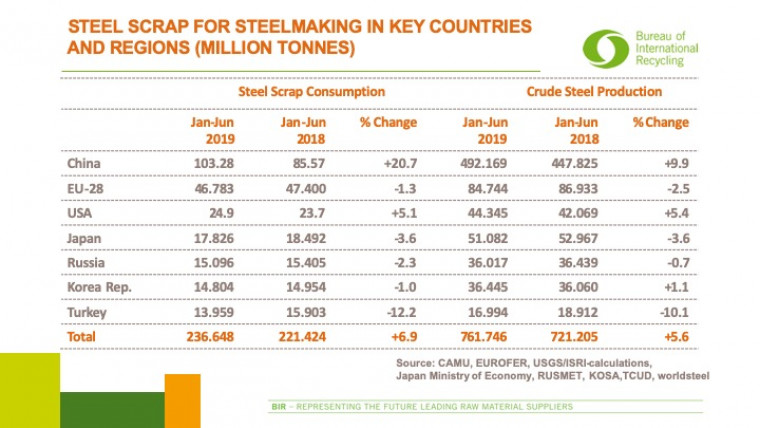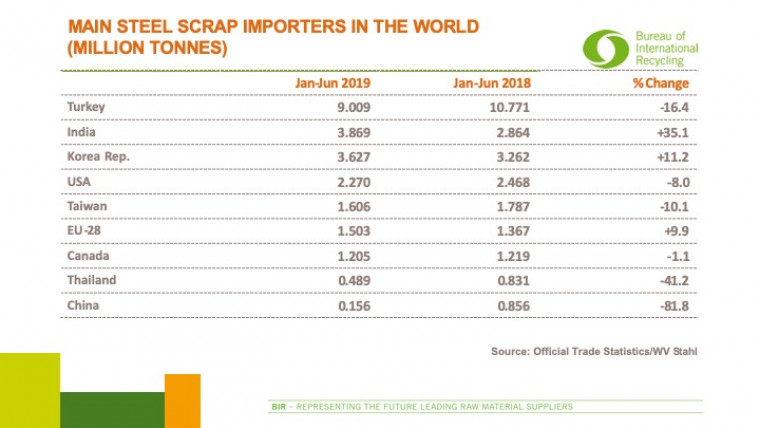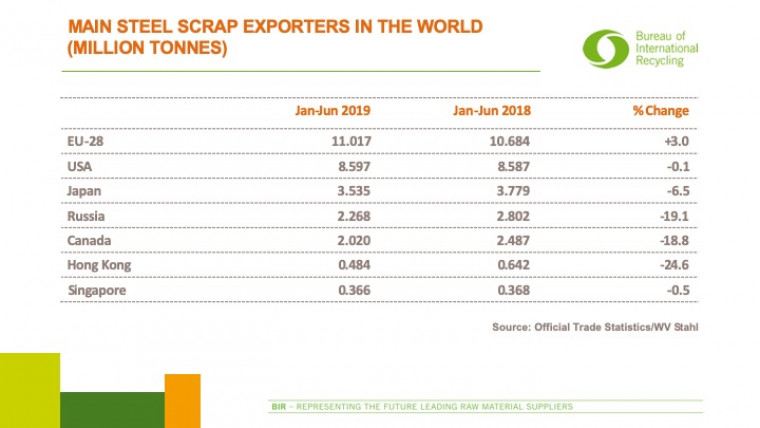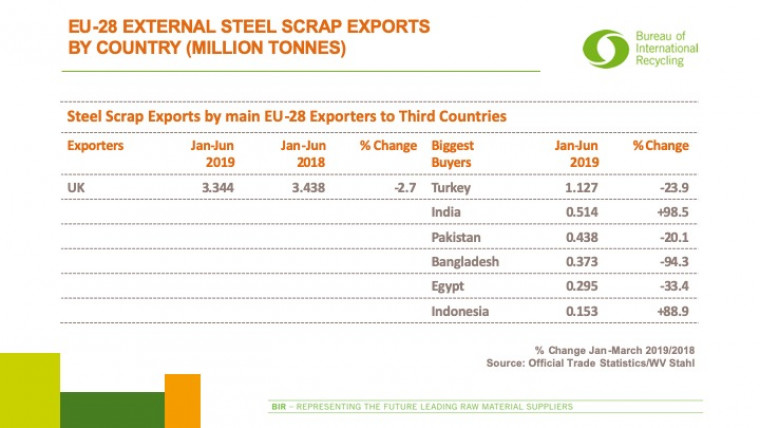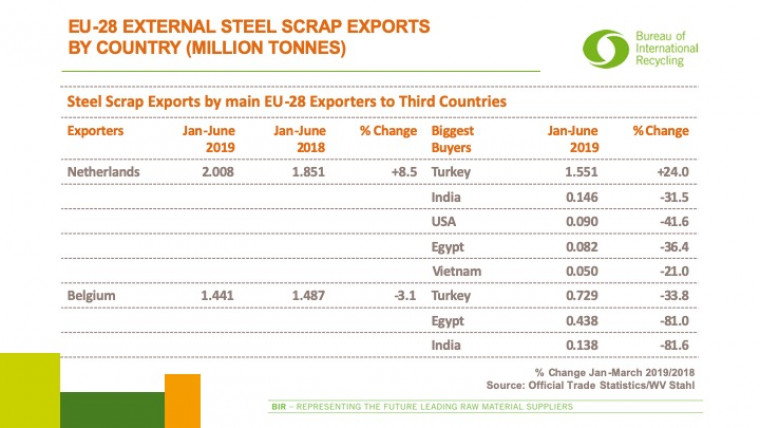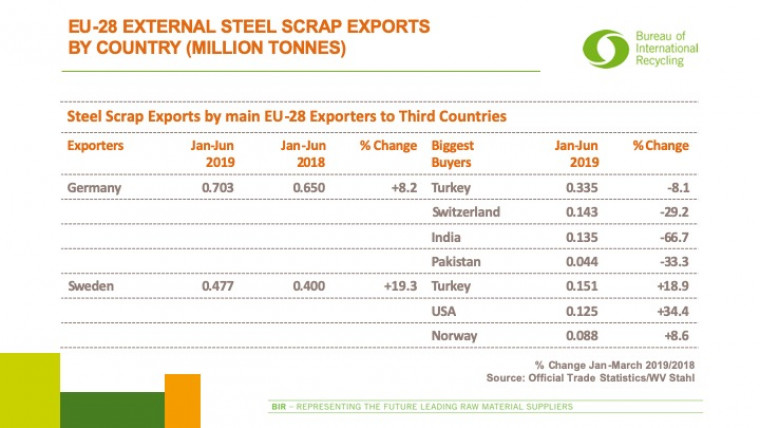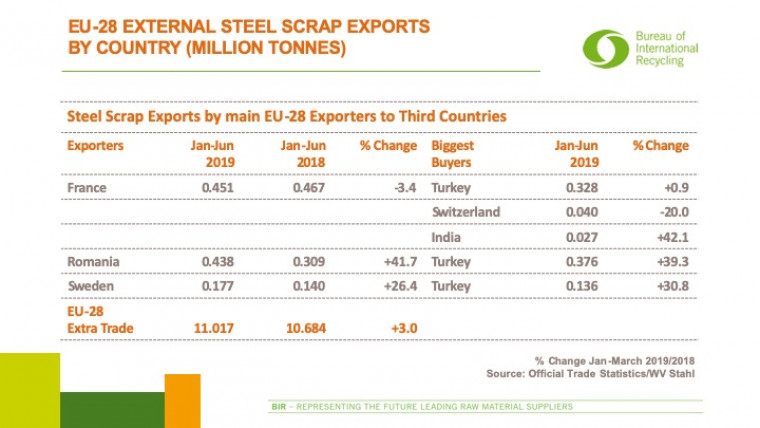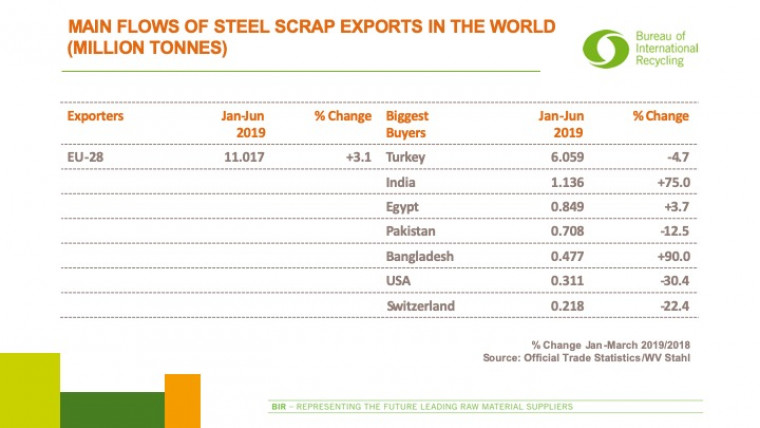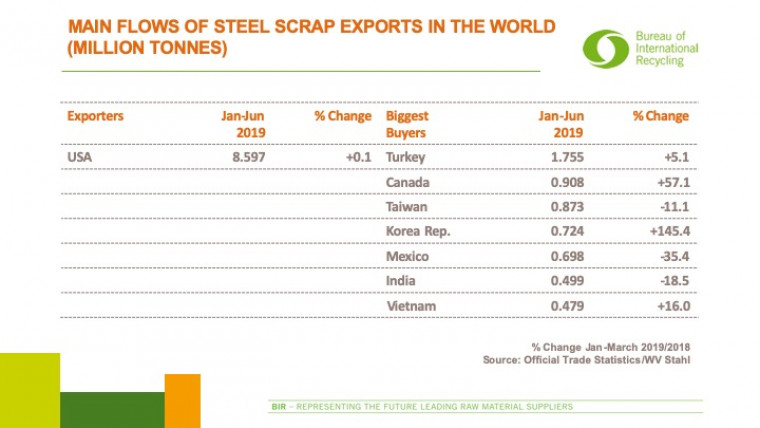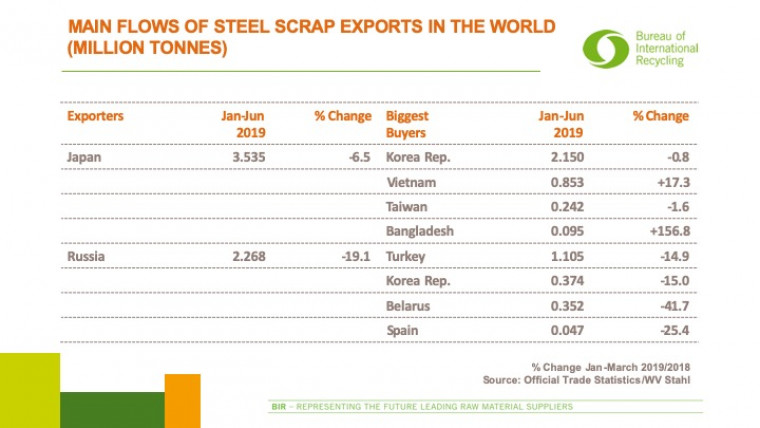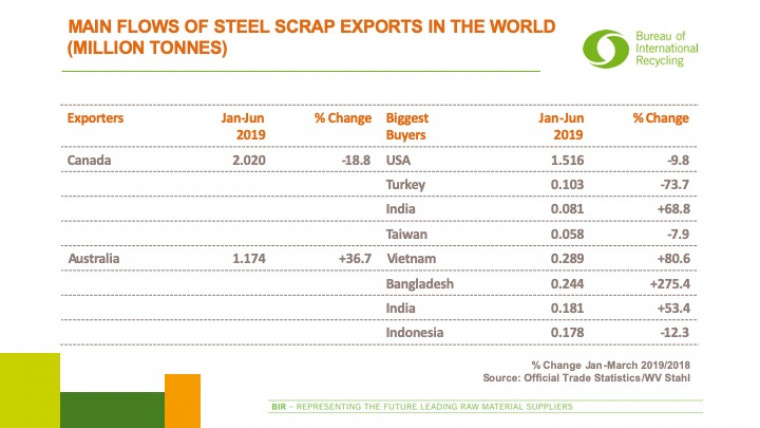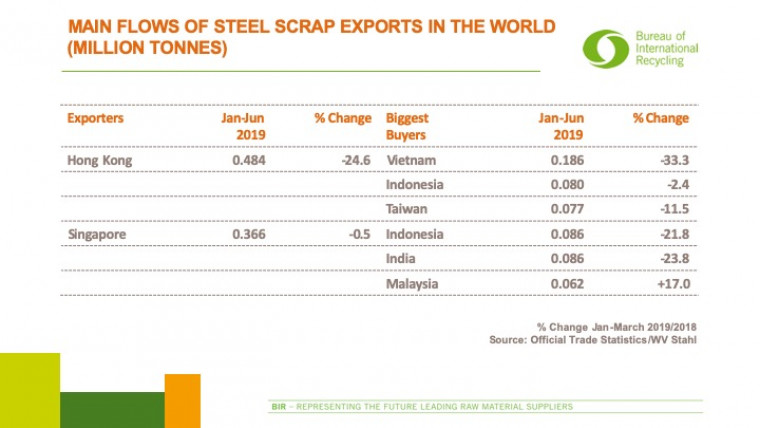WORLD STEEL RECYCLING IN FIGURES
January-June 2019 update
According to worldsteel, world crude steel production amounted to 925.1 million tonnes in the first six months of 2019, an increase of 4.9% over the same period in 2018.
Data in our corresponding table show year-on-year crude steel production increases for China (+9.9% to 492.169 million tonnes), the USA (+5.4% to 44.345 million tonnes) and the Republic of Korea (+1.1% to 36.445 million tonnes). Conversely, production declines were registered by the EU-28 (-2.5% to 84.744 million tonnes), Japan (-3.6% to 51.082 million tonnes), Russia (-0.7% to 36.017 million tonnes) and Turkey (-10.1% to 16.994 million tonnes).
China increases steel scrap usage by 20.7%
In the first six months of 2019, there was a further 20.7% leap in China’s steel scrap usage for crude steel production to 103.28 million tonnes, as compared to 85.57 million tonnes for the same period in 2018. This growth reinforces China’s position as the world’s largest steel scrap user.
As indicated in our previous report, this increase in steel scrap usage is mainly due to higher pollutant emission standards for the steel industry. Most of China’s BOF mills have actively increased scrap inputs and their steel scrap/crude steel ratio is currently 20.2%. There was also a further increase in China’s scrap-intensive EAF production and, last but not least, yet more growth during the first half of 2019 in China’s total crude steel production (+9.9%).
In the first six months of this year, steel scrap usage for crude steel production also increased in the USA (+5.1% to 24.9 million tonnes). Conversely, there was a decline in steel scrap consumption in the EU-28 (-1.3% to 46.783 million tonnes), Japan (-3.6% to 17.826 million tonnes), Russia (-2.3% to 15.096 million tonnes), the Republic of Korea (-1% to 14.804 million tonnes) and Turkey (-12.2% to 13.959 million tonnes). According to the Turkish Steel Producers Association, the underlying reason was a 12.8% decrease in electric furnace production in the first half of 2019.
For January-June 2019, total steel scrap use in the seven key countries and regions was 236.648 million tonnes. Related crude steel production was around 761.7 million tonnes, which amounts to 82.3% of total world crude steel production. We would like to add India, Brazil and Canada to this table next year, which would then present verified steel scrap usage data for around 90% of global steelmaking.
Steep decrease in Turkey’s steel scrap imports
The first six months of 2019 brought a steep 16.4% year-on-year decline in Turkey’s overseas steel scrap purchases to 9.009 million tonnes. According to market participants, the main factors in this reduction were: additional US import tariffs on Turkish steel; sluggish long steel demand in the domestic and export markets; and the weakness of the Turkish economy. Nevertheless, the data for the first half of 2019 confirm that Turkey remains the world’s foremost steel scrap importer.
Over the same period, India replaced the Republic of Korea as the world’s second-largest steel scrap importer with a 35.1% increase in its overseas steel scrap purchases to 3.869 million tonnes. This was despite the Republic of Korea also upping its imports by 11.2% to 3.627 million tonnes. The EU-28 increased its imports by 9.9% to 1.503 million tonnes in the first half of this year whereas import declines were recorded by the USA (-8% to 2.27 million tonnes), Taiwan (-10.1% to 1.606 million tonnes), Canada (-1.1% to 1.205 million tonnes), Thailand (-41.2% to 0.489 million tonnes) and China (-81.8% to 0.156 million tonnes).
Small upturn in EU-28’s overseas steel scrap shipments
The EU-28 remained the world’s leading steel scrap exporter in boosting its outbound shipments in the first six months of 2019 by 3.1% to 11.017 million tonnes, the main buyer being Turkey on 6.059 million tonnes (-4.7% year on year). The EU-28 increased its overseas shipments to India (+75% to 1.136 million tonnes), Egypt (+3.7% to 0.849 million tonnes) and Bangladesh (+90% to 0.477 million tonnes). Conversely, a drop was recorded in EU-28 deliveries to Pakistan (-12.5% to 0.708 million tonnes), the USA (-30.4% to 0.311 million tonnes) and Switzerland (-22.4% to 0.218 million tonnes).
The largest EU-28 steel scrap exporter was the UK with a half-yearly shipment total of 3.344 million tonnes (-2.7% compared to January-June 2018).
The first six months of 2019 brought almost no change in US overseas steel scrap shipments (+0.1% to 8.597 million tonnes). Among the leading buyers to extend their purchases from the USA were main buyer Turkey (+5.1% to 1.755 million tonnes), Canada (+57.1% to 0.908 million tonnes) and the Republic of Korea (+145.4% to 0.724 million tonnes). In contrast, decreases in US scrap deliveries were recorded by Taiwan (-11.1% to 0.873 million tonnes), Mexico (-35.4% to 0.698 million tonnes) and India (-18.5% to 0.499 million tonnes).
Over the same period, a clear upturn was recorded in steel scrap exports from Australia (+36.7% to 1.174 million tonnes) whereas declines in overseas shipments were registered by Japan (-6.5% to 3.535 million tonnes), Russia (-19.1% to 2.268 million tonnes), Canada (-18.8% to 2.02 million tonnes), Hong Kong (-24.6% to 0.484 million tonnes) and Singapore (-0.5% to 0.366 million tonnes).
It is my pleasure to confirm that Daniela Entzian from our BDSV member federation in Germany has been Deputy Statistics Advisor of the BIR Ferrous Division since our May 2019 Convention in Singapore.

Rolf Willeke
Statistics Advisor of the BIR Ferrous Division
Country
 World Steel Recycling in Figures
World Steel Recycling in Figures
